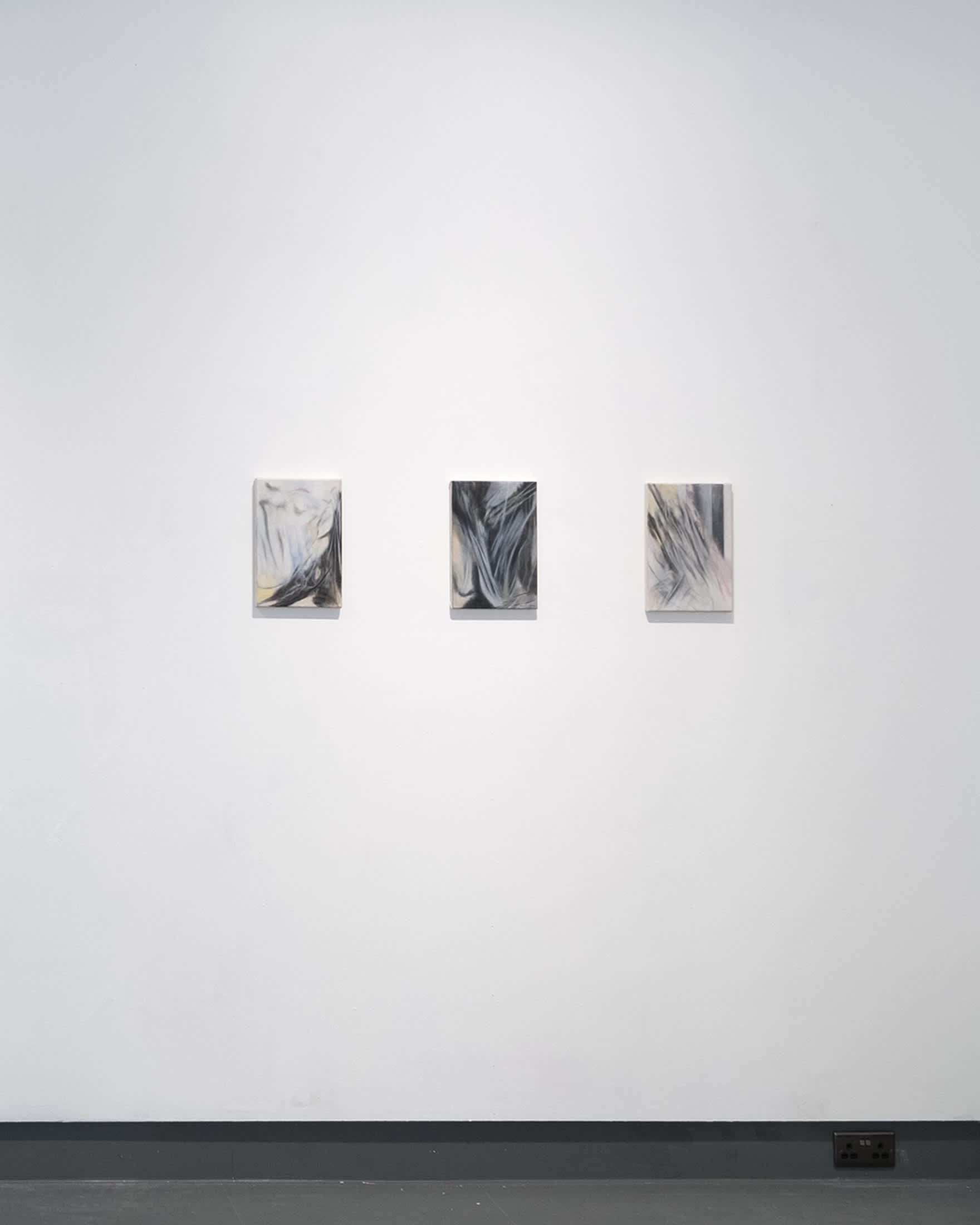“We are always inside an object” –Timothy Morton, Hyperobjects: Philosophy and Ecology after the End of the World (2013) Titanium and sinew, the galactic and the cellular, the terminal and the embryonic coalesce in Kolja Kärtner Sainz’s exhibition, 'Hypernode'. At once biological and mechanical, the works have a dispassionate, evolutionary drive, concerned with new anatomical pathways, alternate ecosystems, and novel, aesthetic registers. A decade ago, cultural theorist Timothy Morton coined the term 'hyperobject' to denote phenomena so large – both geographically and conceptually – they resist representation or understanding. Used to think about objects as varied as climate change to...
“We are always inside an object”
–Timothy Morton, Hyperobjects:
Philosophy and Ecology after the End of the World (2013)
Titanium and sinew, the galactic and the cellular, the terminal and the embryonic coalesce in Kolja Kärtner Sainz’s exhibition, "Hypernode". At once biological and mechanical, the works have a dispassionate, evolutionary drive, concerned with new anatomical pathways, alternate ecosystems, and novel, aesthetic registers.
A decade ago, cultural theorist Timothy Morton coined the term "hyperobject" to denote phenomena so large – both geographically and conceptually – they resist representation or understanding. Used to think about objects as varied as climate change to the internet, crude oil to nuclear materials, the hyperobject’s contours are obscure, only glimpsed on occasion through technology of the anthropocene: Geiger counters, advanced mathematics, computational datasets. Morton’s hyperobjects point to new interrelations in time and space, collapsing distance and matter and presenting alternate ways of thinking about how we are oriented in the world, beyond anthropocentric thinking.
It is within this conceptual landscape that Kolja Kärtner Sainz’s body of work exists. "Hypernode" can be considered an exercise in depicting ecology after the end of the world. The works in the exhibition are nebulous and syntactic, fleshy and shadowy. Shroud of Turin-like, the paintings give the simultaneous impression of something long decayed, or something primordial, on the brink of coalescing into being.
Resisting traditional models of painting, the works in the exhibition relate to each other as an ecosystem beyond the edge of their canvas, providing glimpses into forms not yet evolved: imagined intestinal organs, signals intercepted in paint.
Much as nuclei duplicate during fission, the paintings in the exhibition mutate on the x-axis. In "Bloom" (2024), significantly the first painting in the exhibition, phantom-like shadows give the syntactic impression of layered rib cages and strange, unfamiliar bones, ghoulishly stretching across the canvas. Contextually obtuse, the forms give pause; are we looking at something very close, or at great distance? We are at once submerged in the womb of a fleshy, futuristic creature, and simultaneously witnessing hydrogen and helium gas clouds coming together at a galactic scale.
Where "Bloom" (2024) harbours primordial forms, "Hypernode #1" (2024) impresses speed and immediacy. Umberto Boccioni-esque, the work depicts sweeping metallic gestures, glinting and warping under forces unknown. With rapid evolution, a small trilogy entitled "Waiting, Warping, Waving" (2024) depicts aurora borealis-like ribbons, nebulous translations of rogue signals emitted from anonymous sources. In "Terminus" (2024), fibrous, entangled and layered organic forms suggest a waning of energy, like an engine crackling and cooling after heavy use.
In Kärtner Sainz’s Hypernode, growth and decay are simultaneous impulses. Much like Morton’s hyperobjects, the works present glimpses of seismic shifts as yet unknown. With latent, prophetic weight, the exhibition introduces a gentle tension about not only the lifespan of organic matter, but also the parameters within which we identify life.
With simultaneous urgency but also a biological neutrality, "Hypernode" parallels the dispassionate movements of other, inevitable, perpetual ecological operations: radiation, mutation and eruption.
(text by Lydia Earthy)




